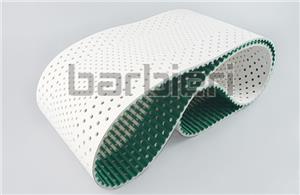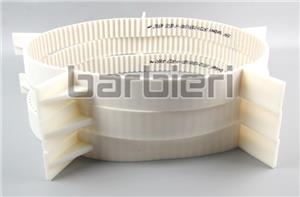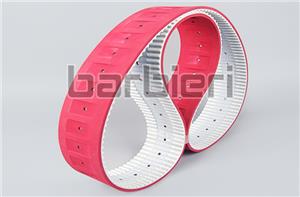Timing belts recommended for working conditions with high cleanliness requirements
Which timing belt is better for working conditions with high cleanliness requirements?
There are two common materials for timing belts: one is Rubber timing belt and the other is Polyurethane timing belt. Under working conditions with high cleanliness requirements, polyurethane timing belts are recommended.
Polyurethane timing belts (TPU timing belts) use thermoplastic polyurethane as the production raw material, with steel wire core or Kevlar rope core embedded as the strength layer, and a layer of nylon cloth can be added on the back of the tooth surface to ensure that the operation characteristics in special applications remain unchanged.
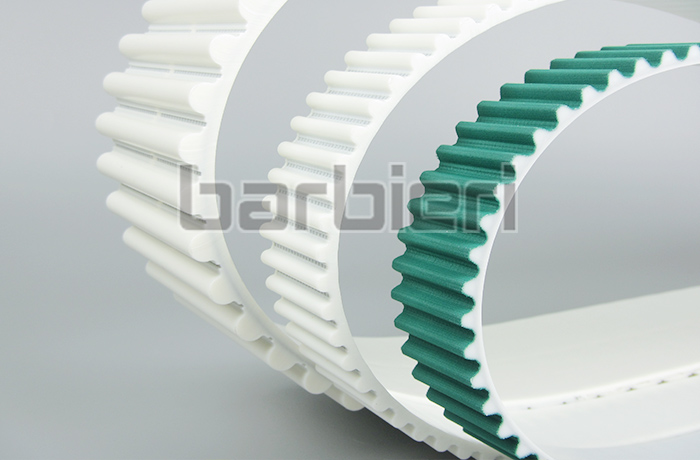
Rubber timing belts are made of chloroprene rubber as the main raw material, with a variety of auxiliary materials for different purposes, fiberglass rope as the skeleton material, and nylon high-elastic cloth as the protection of the tooth surface.
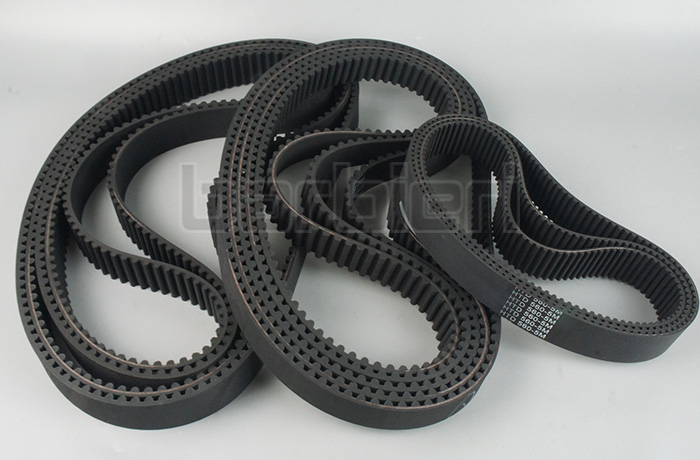
Obviously, rubber timing belts use rubber as the production raw material, while polyurethane timing belts use polyurethane, each with its own advantages and applications in different occasions. Due to the material characteristics, the hardness and wear resistance of rubber timing belts are not as good as those of polyurethane timing belts. Wear of rubber timing belts will produce some dust. Industries with dust requirements such as food, medicine, and electronics usually use polyurethane timing belts. Polyurethane timing belts are also better in terms of resistance to chemicals such as acids and alkalis.
Polyurethane timing belts | Rubber timing belts |
Normal operating temperature -10℃ to +60℃ (can withstand up to +80℃ for a short period of time) | Normal operating temperature -35℃ to +80℃ (can withstand up to +115℃ for a short period of time) |
It has higher hardness than rubber timing belts, is more wear-resistant, and is less likely to generate dust. It can be used in the food and pharmaceutical industries. | Compared with polyurethane timing belts, rubber timing belts have poor wear resistance and will produce dust during operation. In harsh environmental conditions with large changes in temperature and humidity, it is better to use rubber timing belts. |
- Polyurethane Timing Belt
- Annular Timing Belt
- Open-end Timing Belts
- AT-series Timing Belts
- T-series Timing Belts
- STD-series Timing Belts
- HTD-series Timing Belts
- RPP-series Timing Belts
- TT5-series Timing Belts
- Imperial Series Timing Belt
- Supported Polyurethane Flat Belt Series
- Double Sided Timing Belt
- ATN-series Timing Belts
- Timing Belt With Backing
- Timing Belt With Fabric
- Timing Belt Punching
- Polyurethane Self-tracking Timing Belt
- Polyurethane Belt With Profile
- Special Processing Timing Belt

